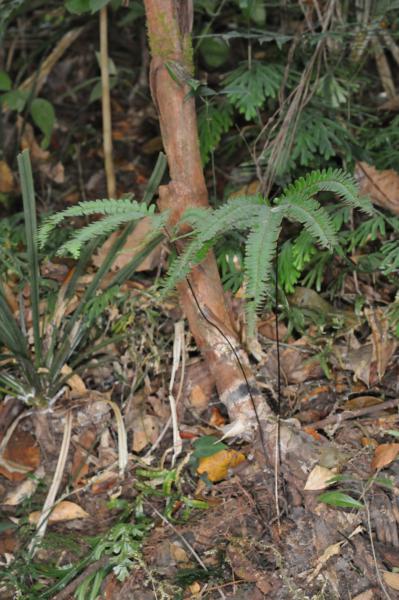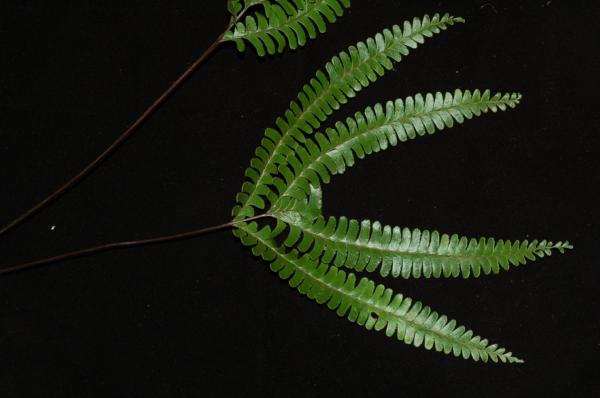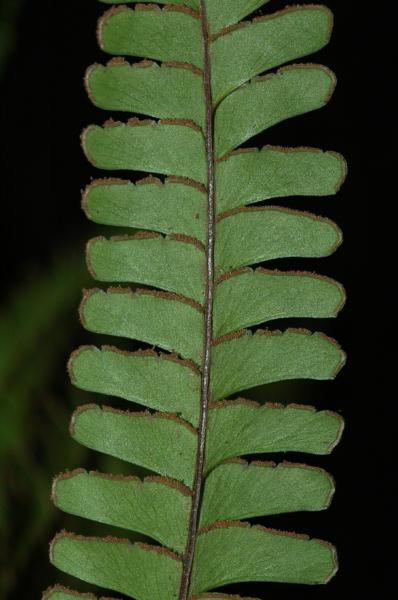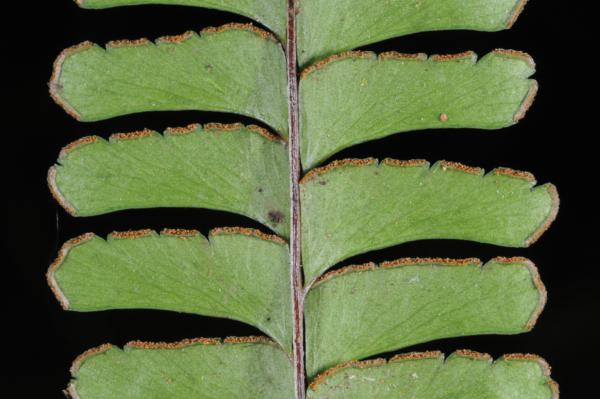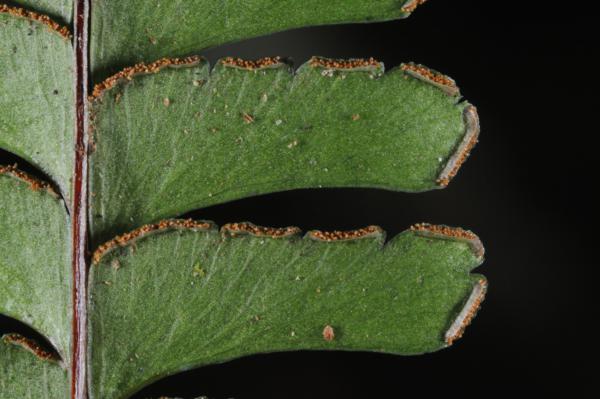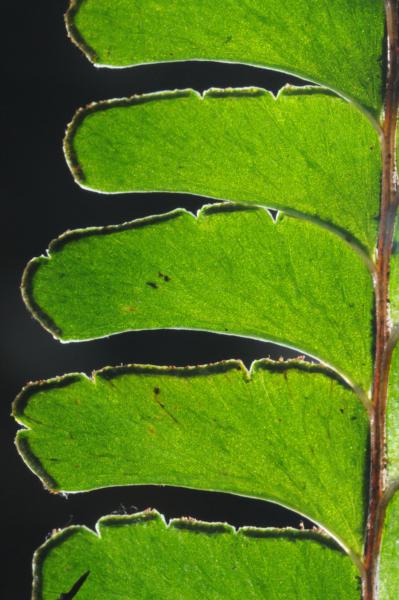
Lindsaea cultrata (Willd.) Sw.
Family
Lindsaeaceae
Nomenclature
Lindsaea cultrata (Willd.) Sw., Syn. Fil.: 119. 1806; Kramer, Blumea 15: 565. 1968; Kramer, Fl. Males., Ser. II, Pterid. 1: 222. 1971; Kramer, Gard. Bull. Singapore 26: 35. 1972; Tagawa & K.Iwats., Fl. Thailand 3: 139. 1985; Boonkerd & Pollawatn, Pterid. Thailand: 91. 2000. – Adiantum cultratum Willd., Phytographia:14, t. 10, f. 2. 1794 .
Lindsaea decomposita Willd., Sp. Pl. 5: 425. 1810; Holttum, Rev. Fl. Malaya ed. 1, 2: 333. f 192. 1955 [‘1954’].
Schizoloma lobatum auct. non (Poir.) Bedd.: Bedd., Handb. Ferns Brit. India: 77. 1883.
Description
Description from Kramer, Fl. Males., Ser. II, Pterid. 1: 222. 1971.Rhizome short creeping, 1.5–2 mm diam.; scales reddish brown, narrowly triangular, to 1.5 mm long, to 8-seriate at base, with a short uniseriate apex. Fronds close; stipe stramineous to more or less castaneous, abaxially at least in the upper part obtusely or usually acutely bi-angular and often sulcate, 10–40 cm long, 0.5–1.5 times as long as the lamina. Laminae simply pinnate or in full-grown plants (probably always) bipinnate, with 1–2 pinnae to a side and a conform but sometimes larger terminal one, 10–30 cm long; primary rachis of bipinnate leaves like the upper part of the petiole. Pinnae obliquely patent, narrowly oblong, like simply pinnate laminae, 10–20 cm long, 2–4 cm wide, acute or shortly, rarely more long-acuminate; pinnule-bearing rachises abaxially sharply bi-angular or shallowly sulcate, the edges sometimes slightly wing-like. Pinnules c. 12–30 to a side, less than their width apart to contiguous, spreading to somewhat ascending or, especially in smaller, simply pinnate laminae the basal ones decurved, herbaceous, medium to dark green when dry, trapeziform to rhombic, or in larger leaves often ligulate or truncate-ligulate, not very rarely with a slightly protracted apex, the larger ones 12–19 by 3–7 mm, almost 2.5 to 3 times as long as wide, usually little narrowed; upper margin straight or convex outward, a separate outer margin present, joining the upper at right angles or more often at an acute angle, less often rounded into the upper margin; upper margin of larger fertile pinnules with 1–3 narrow oblique incisions to 1 mm deep, the outer margin occasionally with one incision; smaller pinnules often entire; sterile margin shallowly crenate; fertile margin not erose; lobes flat. A few upper pinnules strongly reduced, or less often many, 1 or 2 or a few connected with the narrow, acute, asymmetrically lanceolate terminal segment. Veins immersed, evident or not, regularly anastomosing, forming one (very rarely parts of a second) series of areoles, the larger ones 0.75–1.25 mm wide. Sori interrupted by the incisions, the sorus on the outer margin mostly continuous with the outermost one of the upper. Indusium pale or greenish, entire or almost so, 0.2–0.3 mm wide, not reaching the margin by an equal distance or usually less, little reflexed and scarcely concealed at maturity. Spores pale brown, trilete , smooth, c.20 micrometres.
Distribution in Thailand
SOUTH-EASTERN: Chanthaburi; PENINSULAR: Satun.
Wider Distribution
S India, Sri Lanka, Malay Peninsula, Sumatra, Java, and Borneo.
Ecology
Terrestrial in evergreen forests at low altitude.
Proposed IUCN Conservation Assessment
Least Concern (LC). This species is widespread and not under any known threat.
Voucher specimens - Thailand
Middleton et al. 4669, Chanthaburi, Khao Khitchakut National Park (E).
Habit
Lamina
Lower surface of pinnules
Pinnules
Marginal sori
Upper surface of pinnules and venation
Site hosted by the Royal Botanic Garden Edinburgh. Content managed by Stuart Lindsay, Gardens by the Bay, Singapore and David Middleton, Singapore Botanic Gardens. Last updated 24 January 2012
